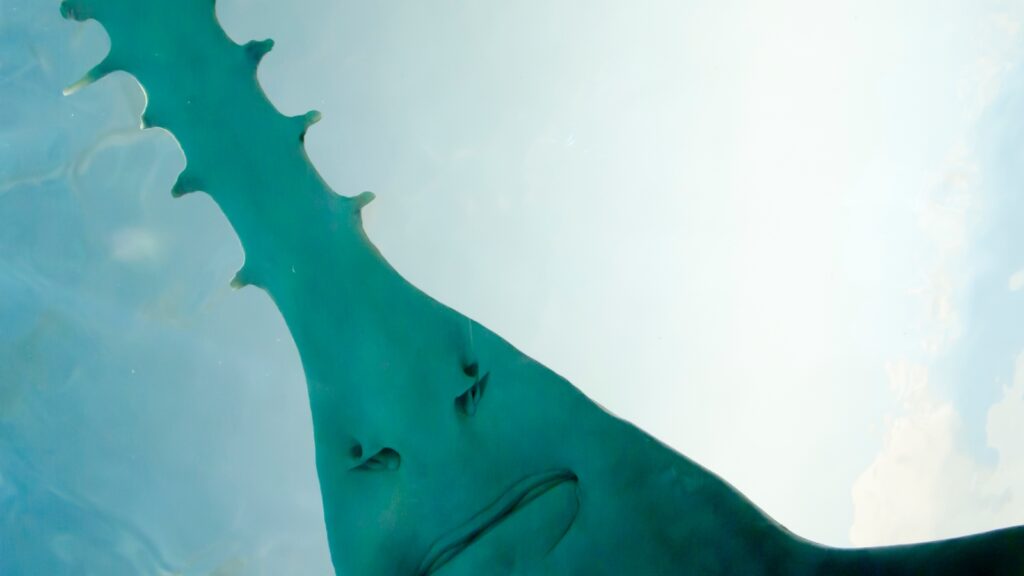iStockphoto / Adrian Wojcik
Late last year, a disturbing phenomenon emerged where endangered sawfish in Florida were observed spinning in circles until they died. Field biologists would soon discover the phenomenon was not unique to sawfish and was occurring in other species such as bull sharks and Goliath grouper, but given that smalltooth sawfish are a critically endangered species and suddenly they were appearing and dying while spinning in circles, that species captured the most attention.
As a native Floridian myself, I heard a litany of possible causes from my fellow locals. Most notably, people in the fishing community looked to (1) red tide, (2) record warm waters, and (3) potential fallout from previous oil spills in the Gulf of Mexico. Those were the top three possible causes I’d heard the most last Winter while scientists rushed to test water samples and samples retrieved from the dead and dying sawfish and other species.
Flash forward to today, and Bethany Augliere of National Geographic published an extensive story on the cause that led to the sawfish spinning disease. In short, the spinning disease was caused by “multiple species of dinoflagellates” which normally live on seagrass on the seafloor. I haven’t thought about dinoflagellates since taking a few Bio courses at FSU and can’t speak to the individual species but it’s not necessarily the species we need to be concerned with here, it’s what they were doing…
These species of dinoflagellates that normally live on seagrass and large algae on the seafloor moved up in the water column, for reasons unbeknownst to marine biologists, and that prolonged exposure of these microscopic algae is what led the fish to spin until they died.
…But why??
That’s the million dollar question. It’s also a question that nobody has the answer to yet.
Dr. Alison Robertson studies algal blooms at the University of South Alabama’s Stokes School of Marine and Environmental Sciences, she told Nat Geo ‘it’s just really rare, we’ve really never seen that, this is what we have to work out.”
Marine ecologist Michael Parsons is credited with discovering the breakthrough that led to this revelation. While testing water samples, he observed elevated levels of a dinoflagellate in the genus Gambierdiscus. That genus of dinoflagellates produces the neurotoxin ciguatoxin which can lead to ciguatera in humans, a miserable affliction that makes hot feel cold and vice versa and can cause extreme sickness.
Testing fish, they didn’t find these neurotoxins in the muscles but in the livers of symptomatic fish they found elevated levels of toxins produced by dinoflagellates. That led to the revelation that it wasn’t just one specific dinoflagellate but a combination of them.
Dr. Robertson said “based on the evidence that we’ve been accumulating here in our lab, we believe that the behavioral effects that we have seen, particularly in sawfish, were associated with the combined exposure of a number of different [bottom-dwelling] algal toxins. Some algae produce multiple toxins, so it is not a one-to-one relationship.”
From here, scientists need to determine what led these dinoflagellates to rise up in the water column. That testing process could prove lengthy for many reasons. Testing real-world conditions presents any number of complications and testing in lab conditions may miss out on a combination of factors.
So harkening back to the original theories from locals…Red tide, record warm water, water contamination, etc… Scientists will have to perform countless tests to discover why this happened. Furthermore, they will need to learn more about why sawfish were impacted so hard compared to other species.
Alison Robertson did tell Nat Geo there is a ‘silver lining’ in all of this. Saying “this is the first time that there has been such an intensive scientific investigation in the case, where many scientists have been brought together, sharing data to learn more about the Florida Keys ecosystem and ecosystem health.”
For context, at least 54 sawfish were confirmed dead from the spinning affliction. It is believed many more died and were not discovered. 54 might not sound like a lot but it’s believed there are only around 650 breeding female sawfish in Florida so that number represents a huge portion of the population.

